What's New
Displaying results 2241 - 2250 of 4052
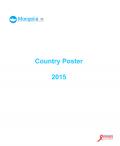
Resource | Fact Sheets,
Mongolia country poster prepared by UNAIDS Regional Support Team for Asia and the Pacific and Data Hub.
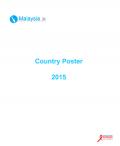
Resource | Fact Sheets,
Malaysia country poster prepared by UNAIDS Regional Support Team for Asia and the Pacific and Data Hub.
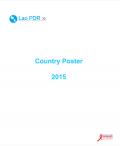
Resource | Fact Sheets,
Lao People's Democratic Republic country poster prepared by UNAIDS Regional Support Team for Asia and the Pacific and Data Hub.
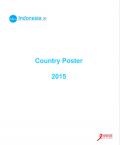
Resource | Fact Sheets,
Indonesia country poster prepared by UNAIDS Regional Support Team for Asia and the Pacific and Data Hub.
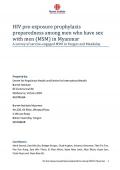
Resource | Publications,
Pre-exposure prophylaxis (PrEP) – the use of HIV antiretroviral (ARV) treatment by HIV-negative individuals to reduce their risk of acquiring HIV - is now recognised as an emerging and fundamental biomedical component of combination HIV prevention approaches.
With 39% of men who have sex with men (MSM) in this study classified as willing to use PrEP and high rates of recent HIV testing, PrEP may be a viable addition to comprehensive HIV prevention strategies for MSM in Myanmar. The recent decentralisation of Myanmar’s health system has seen HIV testing and other services increasingly offered through NGOs and recent investments in the implementation and maintenance of accessible HIV services for MSM may offer an important foundation for PrEP programmes. Demonstration or implementation projects that examine the effectiveness of PrEP in a real life setting, including identification of issues related to drug adherence and logistics associated with PrEP dispensing and monitoring, will be an important next step to guide any future implementation of PrEP in Myanmar.
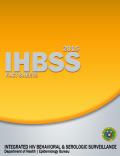
Resource | Fact Sheets,
Compilation of the data on the 2015 Integrated HIV Behavioral and Serologic Surveillance among:
- Males/Transgenders Who Have Sex With Males (M/TSM)
- Freelance Female Sex Workers (FFSW)
- Male Entertainment Establishment Workers (MEW)
- Transgender Women (TGW)
- Injecting Drug Users (IDU)
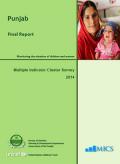
Resource | Publications,
The Punjab Multiple Indicator Cluster Survey (MICS), 2014 is a household survey covering 38,405 households to provide estimates of around 125 indicators for the province, 9 divisions and 36 districts. The results will be used to update indicators used for monitoring the situation of children and women in Punjab.
The survey collected information on standard MICS topics such as housing characteristics, child and maternal health, HIV/AIDS, domestic violence, child discipline, child protection and use of Information/Communication Technology among other topics. Additional information was also collected on income and employment, remittances, safety nets, tuberculosis, hepatitis and life satisfaction.

Resource | Publications,
This report is based on 5th round of the Multiple Indicator Cluster Survey, which Mongolia adopted and called the Social Indicator Sample Survey Mongolia (SISS). The National Statistics Office (NSO) of Mongolia conducted the SISS in 2013 with collaboration with United Nations Children’s Fund (UNICEF) and United Nations Population Fund (UNFPA). The NSO adopted all the survey tools developed under the MICS5 programme. The survey provides statistically sound and internationally comparable data essential for developing evidence-based policies and programmes, and for monitoring progress toward national goals and global commitments. Among these global commitments are those emanating from the World Fit for Children Declaration and Plan of Action, the goals of the United Nations General Assembly Special Session on HIV/AIDS, the Education for All Declaration and the Millennium Development Goals (MDGs).Also, there is some national commitments such as 4th National Reproductive Health Program and Indicators on Child protection.
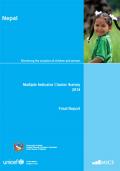
Resource | Publications,
The Nepal Multiple Indicator Cluster Survey (MICS 2014) was conducted by the Central Bureau of Statistics under the National Planning Commission from January to June 2014. Technical and financial support for the survey was provided by the United Nations Children’s Fund (UNICEF) Nepal.
Nepal MICS 2014 provides valuable information and the latest evidence on the situation of children and women in Nepal before the country was hit by an earthquake of 7.8 magnitude on 25 April 2015. The survey presents data from an equity perspective by indicating disparities by sex, region, area, education, household wealth, and other characteristics. Nepal MICS 2014 is based on a sample of 12,405 households interviewed and provides a comprehensive picture of children and women in the 15 sub-regions of the country.

Resource | Fact Sheets,
HIV self-testing (HIVST) provides an opportunity for people to test themselves discreetly and conveniently, but it does not provide an HIV diagnosis. Several countries have already introduced or are considering the introduction of HIVST but there are question as to how accurate rapid diagnostic tests (RDTs) adapted for self-testing will be, particularly in the hands of untrained users. This review compiles existing evidence and reports on the accuracy of HIV RDTs used for self-testing.





